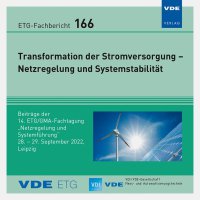Phase Restoring Principle: Concept of a novel grid-forming converter scheme
Konferenz: Transformation der Stromversorgung – Netzregelung und Systemstabilität - 14. ETG/GMA-Fachtagung
28.09.2022 - 29.09.2022 in Leipzig, Germany
Tagungsband: ETG-Fb. 166: Transformation der Stromversorgung – Netzregelung und Systemstabilität
Seiten: 6Sprache: EnglischTyp: PDF
Autoren:
Kuri, Ananya (Friedrich-Alexander Universität Erlangen-Nürnberg, Germany & Siemens AG, Erlangen, Germany)
Mehlmann, Gert; Luther, Matthias (Friedrich-Alexander Universität Erlangen-Nürnberg, Germany)
Audring, Dirk (Siemens AG, Erlangen, Germany)
Zurowski, Rainer (Siemens Energy Global GmbH & Co. KG, Erlangen, Germany)
Inhalt:
This paper presents a recently introduced globally stable grid-forming control scheme called the ‘Phase Restoring Principle’ (PRP) based on the change of perspective from the converter to the grid. The usual approach uses a synchronization method, such as a phase-locked loop (PLL) or frequency-locked loop (FLL), which serves as a reference frame for the design of the control behaviour and therefore designed to respond to set point changes. The Phase Restoring Principle utilizes a novel angular transformation of the reference frame in the opposite direction to a disturbance in the ohmic-inductive network. As a result, the control scheme prioritizes response to perturbation rather than setpoints. Thus, the PRP transformation directly takes over the main part of the control task of responding to an event, reduces the order of control dynamics, and serves as a basic block of the grid-forming control scheme. The main characteristics of PRP as a key element are discussed in the context of typical voltage-sourced models in a benchmarked test network. The dynamics are compared and discussed, visualizing the true virtual inertia characteristic inherent to PRP.


